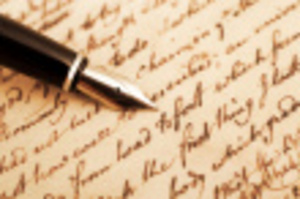Vintage pens are romantic and eclectic. If you have an interest in accumulating these treasures, basic guidelines from seasoned antique pen experts will point you in the right direction.
English novelist Graham Greene once said, “My two fingers on a typewriter have never connected with my brain. My hand on a pen does. A fountain pen, of course.” Writing with a fountain pen-or any vintage pen-evokes a special feeling. Perhaps this accounts for the growing popularity of antique pen collecting. Interested beginners should not shy away from amassing a respectable vintage pen collection.
The Collectors Weekly states that there are three main types of vintage pens. The first is a dip pen which has a nib to dunk into an inkwell. The second is a fountain pen with a self-contained ink reservoir. The third is the ballpoint pen which has a little ball allowing ink to flow out when pen touches paper.
Two antique pen experts shared their advice with me regarding novice pen collecting. Jamie Gallagher is CEO of Faber-Castell, pioneers in the pen industry (Click here to see a commercial they did in the 1950s introducing the “new” ballpoint pen). David Nishimura, creator of VintagePens.com, is former director of the Pen Collectors of America. David says collectors primarily define vintage pens as those made before 1965. The most desirable pens were created from the 1880s to the 1930s, the so-called Golden Age of the fountain pen.
Gather Knowledge
David and Jamie firmly believe that research is the first step to understanding vintage pens. Before you purchase antique pens, do your homework. Begin online. There are many books full of history, chronology, trading prices, and facts that a collector can employ.
Establish Contacts
An important component of successful pen collecting is networking. Join a collectors’ group. There are online forums, but David urges caution as many of these forums are dominated by those having lots of free time, not necessarily lots of knowledge. Go to pen shows and pen club meetings where relationships can be forged with advanced collectors and top dealers. This provides a huge advantage to anyone savvy enough to seize the opportunity.
Seek Markets
Many pen collectors frequent estate sales and flea markets. National pen shows generally have designated areas for the sale or trade of vintage pens. One of the largest shows is held yearly in Washington, D.C. Seminars are frequently offered to beginners at pen shows.
Notice Details
Vintage pens must be authentic with parts appropriate to the brand for best collectible value. The mechanics should be in good working condition. Original materials in pristine condition without discoloration, cracks or severe signs of aging are desirable. David advises collectors to buy pens that have been professionally reconditioned to the highest standard. If a pen is purchased at a flea market, take it to an expert for reconditioning.
Understand Worth
Antique pens crafted before World War II generally start in the hundreds of dollars and go well into the thousands. Pens manufactured after WWII command less cash due to the switch to mass production in that time era. Two pens may be very similar, yet one can be worth more due to a rarity such as color. Buy a few good items, not loads of mediocre ones. Follow your own taste. There is a huge range of vintage pens, and a collector will do very well not following the crowd. Buy with an eye for quality and that ‘something special’. If you plan to add an expensive pen to your collection, Jamie recommends an expert inspection before purchase. Ask for a guarantee from the seller.
Research and knowledge are invaluable. Patience and available investment capital ultimately determine the level of the collector.
Sources: David Nishimura, VintagePens.com; Interview March 2010
Jamie Gallagher, CEO Faber-Castell; Interview March 2010
